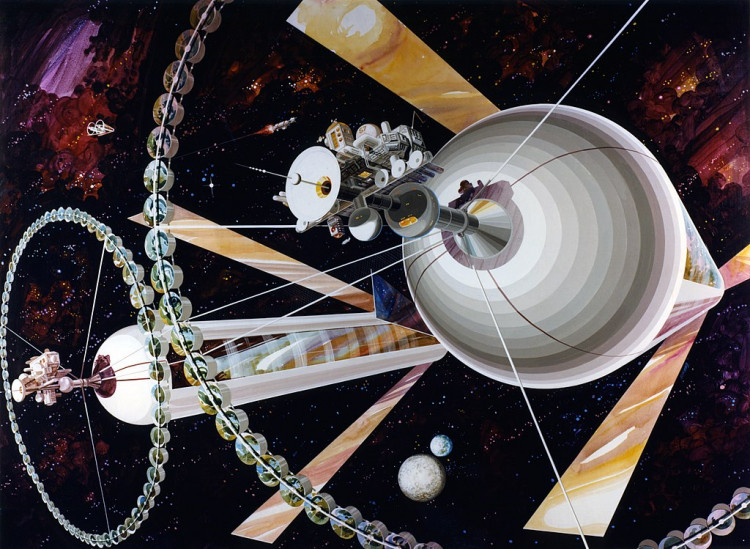While scientists and space agencies are eyeing Mars as an obvious candidate to where the first human colony in space will be built, one astrophysicist thinks we should ditch Mars and go to the unlikeliest region one could think of in the solar system: the main asteroid belt. Specifically, near Ceres.
Astrophysicist Pekka Janhunen of the Finnish Meteorological Institute in Helsinki outlines his concept of a "megasatellite" of thousands of cylindrical satellites; all joined together inside a disk-shaped structure that permanently orbits Ceres.
Each of these cylindrical habitats could hold more than 50,000 humans, sustain an artificial atmosphere, and produce Earth-like gravity by the centrifugal force of its own rotation. This type of habitat was first proposed in the 1970s, called the O'Neill Cylinder.
But why Ceres? Its average distance from Earth is similar to that of Mars, Janhunen noted, making travel comparatively easy-but, the dwarf planet still has a significant fundamental benefit. Ceres is rich in nitrogen, which will be key to the creation of the orbiting atmosphere of the settlement, Janhunen said (Earth's atmosphere is around 79% nitrogen).
Instead of constructing a settlement on the surface of the tiny world, the settlers could use space elevators to move raw materials straight from the ground to their floating habitats.
This orbital lifestyle will also resolve one of the main risks Janhunen sees about the notion of a Martian surface colony: the health repercussions of low gravity.
"My concern is that children on a Mars settlement would not develop to healthy adults (in terms of muscles and bones) due to the too-low Martian gravity," Janhunen told Live Science. "Therefore, I searched for [an] alternative that would provide [Earth-like] gravity but also an interconnected world."
Dr. Janhunen is not a stranger to advanced ideas. In addition to being a research manager at the Finnish Meteorological Institute, he is a visiting professor at the University of Tatu and a senior technical advisor to Aurora Propulsion Technologies- where he oversees the commercial development of the Electric Solar Wind Sail (E-sail) design that he presented back in 2006.
According to Janhunen's concept, each cylinder would create its own gravity by rotating; each cylindrical habitat would weigh about 6.2 miles in length, have a radius of 0.6 miles, and complete a full rotation every 66 seconds to achieve the centrifugal force required to mimic Earth-like gravity.
A single cylinder could easily accommodate around 57,000 individuals, Janhunen said, and would be fixed in position next to its adjacent cylinders by strong magnets, such as those used in magnetic levitation.
Dr. Janhunen's yet to be peer-reviewed paper is Jan. 6 date to the preprint database arXiv.





